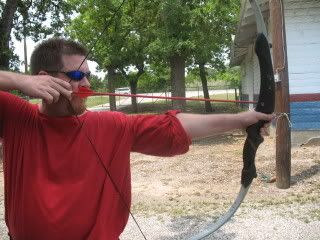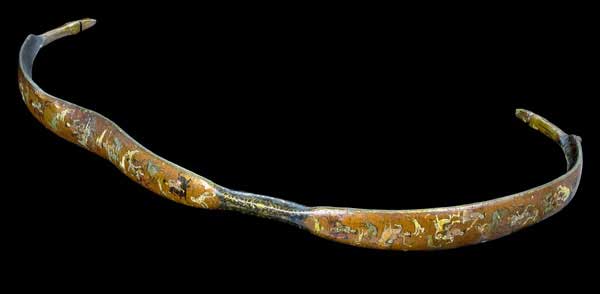Bow

Contents
Bow
The maximum limit for a bow’s pull is 35 pounds with a maximum 28-inch draw length. At close range (20 feet or less) bows must be no more than half drawn. If a bow is hit by a weapon, it is destroyed.
Crossbow
Crossbows are limited to no more than 450 inch-pounds.
Arrow and Bolts
Arrows may never be used as a hand or melee weapon. The “point” of all arrows must have a diameter of at least 2.5 inches. An arrow scores hits like any other weapon. All arrows and bolts are Weapon Destroying and Armor Breaking.
Arrow Construction
Arrows are generally fragile and are often broken under the constant rigors of fighting. Arrow shafts made from graphite offer a flexibility and resilience not found in their aluminum or wooden counterparts. Wooden arrows must be taped along their entire length. All arrowheads must be removed from the arrow, and the base of the arrow at the tip must be built up with a sufficiently strong material to at least the diameter of a penny, which is used to cap the arrow. Arrows may not be drawn beyond 28 inches, and must have a stopper in place if they are longer. Arrows must have a minimum of 2 inches of closed cell foam on the tip, and it must be at least 2.5 inches in diameter. It is suggested that you also incorporate a layer of open cell foam to reduce the recoil of the arrow when it strikes a solid surface. Arrow fletching and nocks must be in good repair, and arrowheads should be checked regularly for degrading foam. All arrows must be clearly labeled with their owner’s name on the shaft. Properly colored head covers may be used in lieu of ribbons.
Who uses this weapon?
Bows are used by Archers, Assassin, Scout, and Druids using their Ranger ability .
From more information on Arrows see the Projectiles Section.
About Bows
A bow is a weapon that projects arrows powered by the elasticity of the bow. As the bow is drawn, energy is stored in the limbs of the bow and transformed into rapid motion when the string is released, with the string transferring this force to the arrow. Bows are used for hunting and sport (target shooting), and as a weapon of war.

The technique of using a bow is called archery. Someone who makes bows is known as a bowyer, and one who makes arrows a fletcher. Together with the atlatl and the sling , the bow was one of the first ranged weapons or hunting tools which used mechanical principles, instead of relying solely on the strength of its user.
The development of gunpowder, muskets, and the growing size of armies (and their consequent demand for less-trained levies) slowly led to the replacement of bows as weapons of war, supplanted by firearms, which were simpler for conscripts to learn and use, causing bows to be relegated to sport and hobby use.
Regardless of its other construction, the basic elements of a bow are a pair of curved elastic limbs, typically of wood, connected by a string. By pulling the string backwards the archer exerts compressive force on the inner section, or belly, of the limbs as well as placing the outer section, or back, under tension. While the string is held, this stores the energy later released in putting the arrow to flight. The force required to hold the string stationary when pulled is often used to express the power of a bow, and is known as its draw weight. A higher draw weight is associated with a more powerful bow, which is able to project arrows heavier, faster, or a greater distance.
In bows drawn and held by hand, the maximum draw weight is determined by the strength of the archer. The maximum distance the string could be displaced and thus the longest arrow that could be loosed from it, a bow’s draw length, is determined by the size of the archer. For bows drawn and held mechanically, the maximum draw weight was a matter of engineering. The mechanical force required to draw the string was mainly limited by the time required to do so.
Links
- make a bow from a sapling by Jon Jeffer
See Oznog.